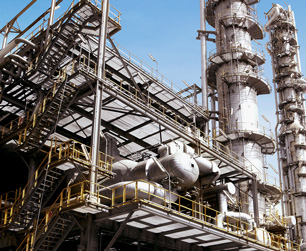Tetrachloroethanes

Tetrachloroethanes (1,1,2,2-Tetrachloroethane and 1,1,1,2-Tetrachloroethane) are volatile organic chemicals with a similar chemical makeup.
1,1,2,2-Tetrachloroethane was once used industrially as a solvent and intermediary in the manufacture of further chemical products, including metal degreasers, paint removers, wood finishes, photographic film, and oil and fat extractants. It was also used as an insecticide, fumigant and weed killer. Due to toxicity concerns, its use in industry has diminished and it hasn't been registered for use as in insecticide since the 1970s.
1,1,1,2-Tetrachloroethane has no industrial use, but may form as an undesired by-product during chemical manufacturing.
Although no longer widely used in the United States, tetrachloroethanes may arrive in the environment through industrial emissions when formed during chemical production. Because of their volatility and lack of bioaccumulation, they are very rarely found in water.
Health Effects of Tetrachloroethanes
Tetrachloroethanes are accutely toxic, impairing the function of the central nervous and respiratory systems and irritating the skin and eyes. Ingestion can cause diarrhea, nausea, vomiting, and esophageal burns. Poisoning from large amounts can cause severe liver damage.
Long term exposure can affect the liver, central nervous system and gastrointestinal system. According to the EPA, 1,1,2,2-Tetrachloroethane is “likely to be carcinogenic to humans.”
Water Treatment for Tetrachloroethanes
Tetrachloroethanes may be treated with activated carbon. According to Lenntech, activated carbon has a “high probability” of adsorbing 1,1,2,2-Tetrachloroethane.
Sources: EPA (1), EPA (2), WHO, PubChem, Lenntech, Photo: WikiMedia, author: Secl
Site Index
Filtration Systems
- Aeration for Iron & Sulfide
- Backwashing Filters
(whole house & well units)
- Chlorine & Chemical Injectors
- Countertop Water Filters
- Emergency Filters
- Garden Hose Filters
- Reverse Osmosis, Residential
- Reverse Osmosis, Commercial
- Shower Filters
- Specialty Filters
- Ultraviolet Systems
- Undersink Filters
- Water Softeners
- Whole House Filters
Cartridges
Parts
- Replacement Parts
- Faucets
- Filter Media
- Fittings
- Housings
- O-rings
- Pumps
- Pura UV
- R.O. Parts
- R.O. Tanks
- R.O. Booster Pump
- VIQUA UV